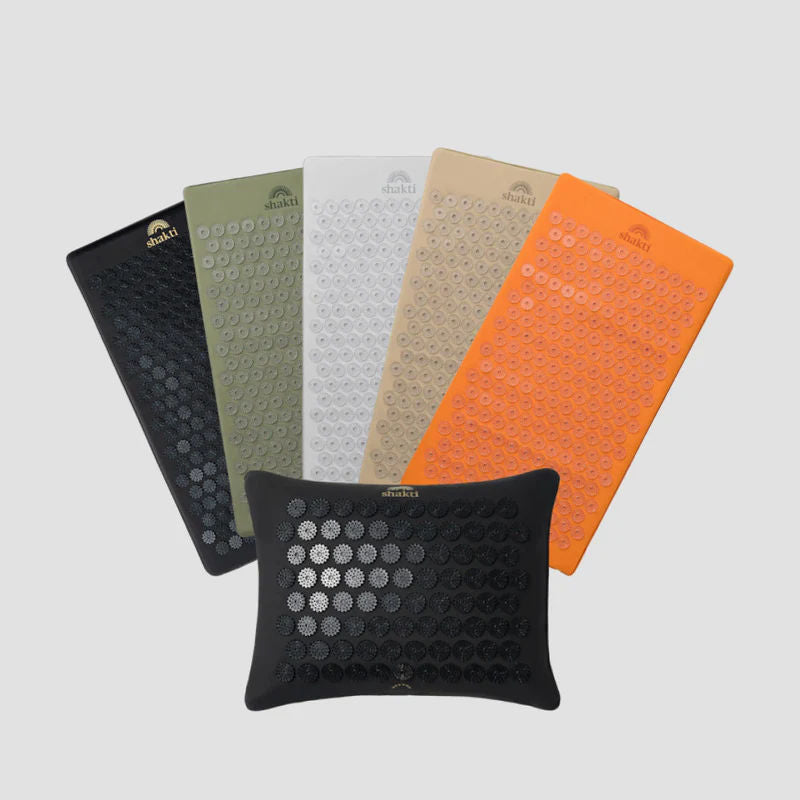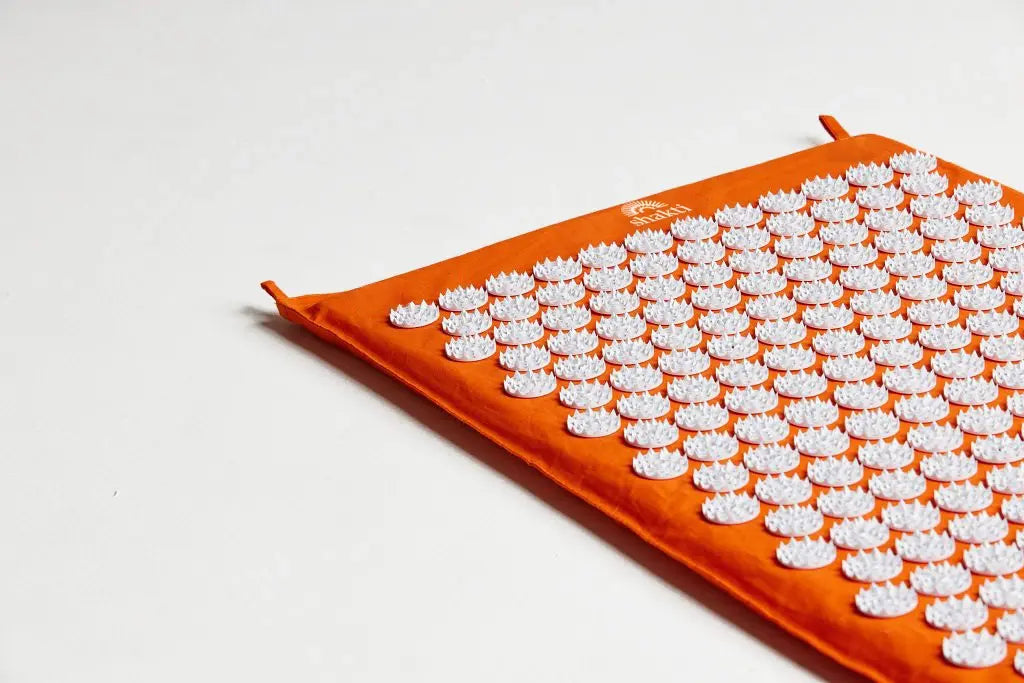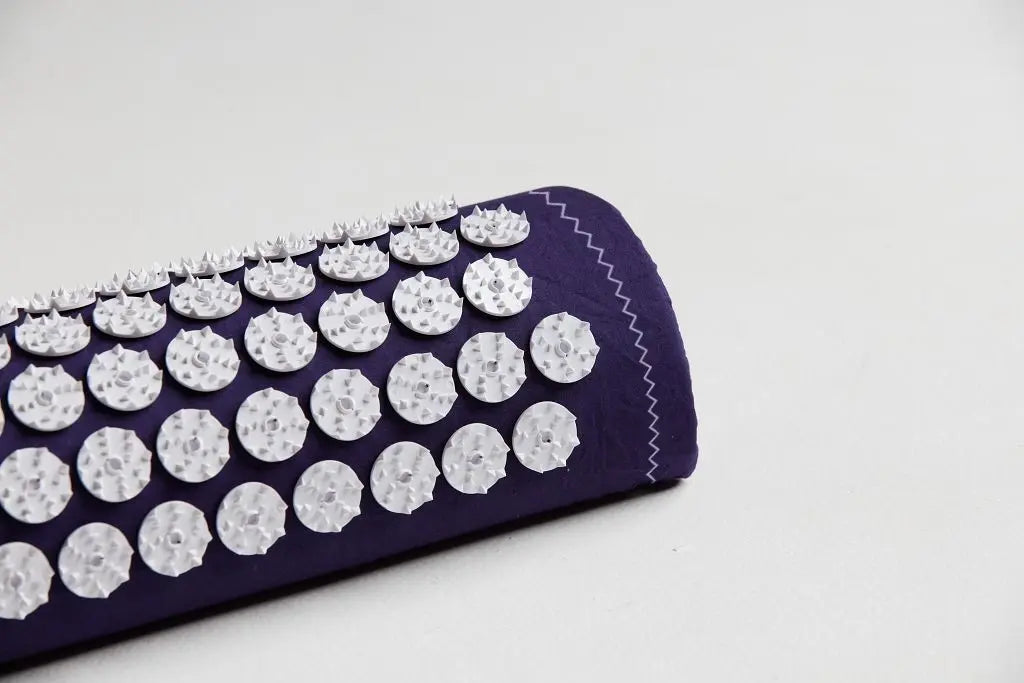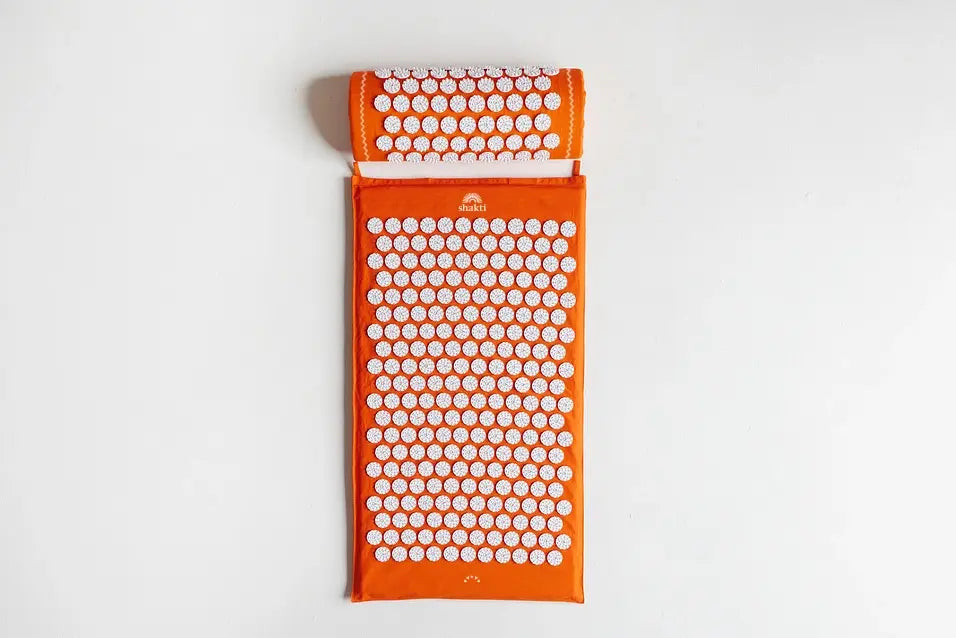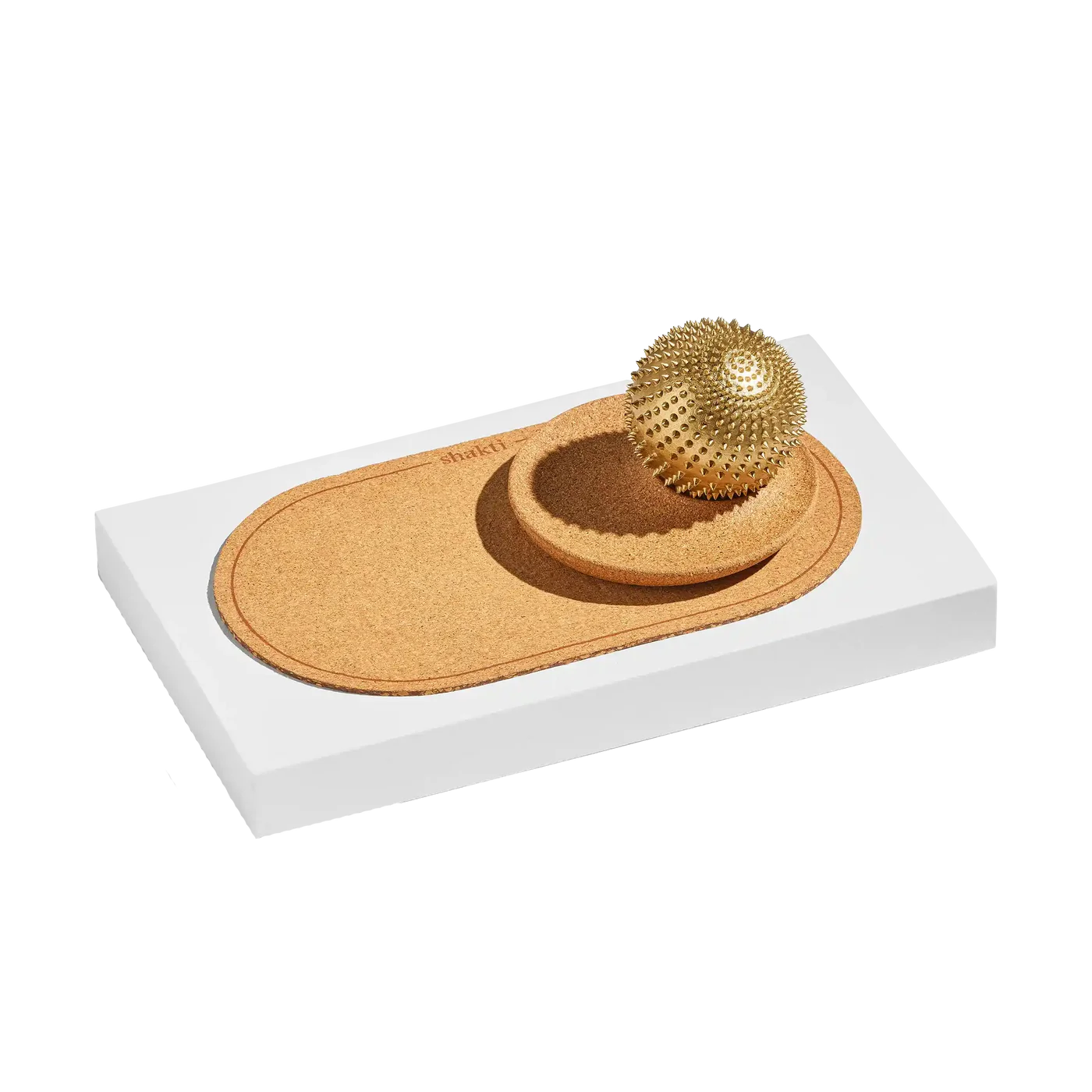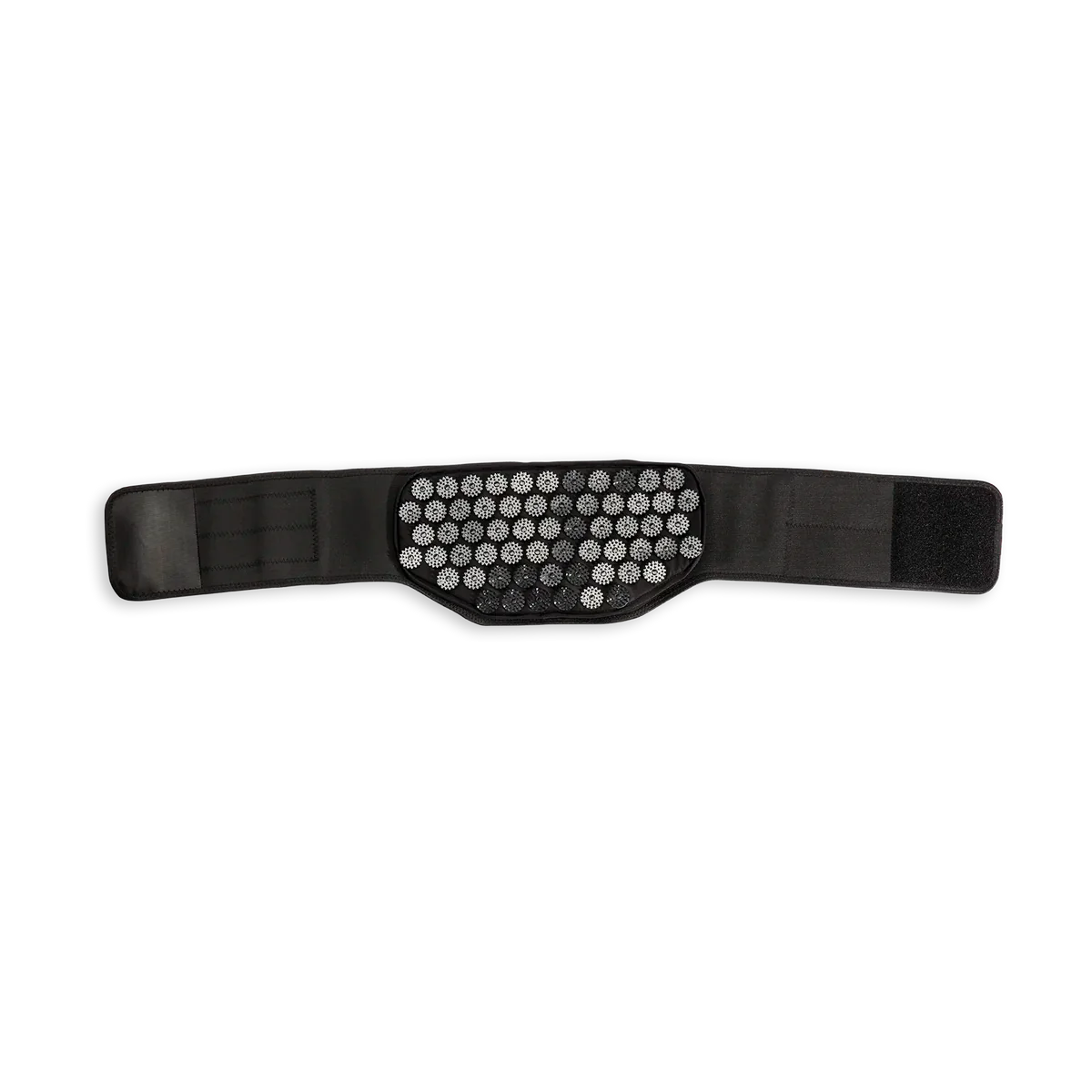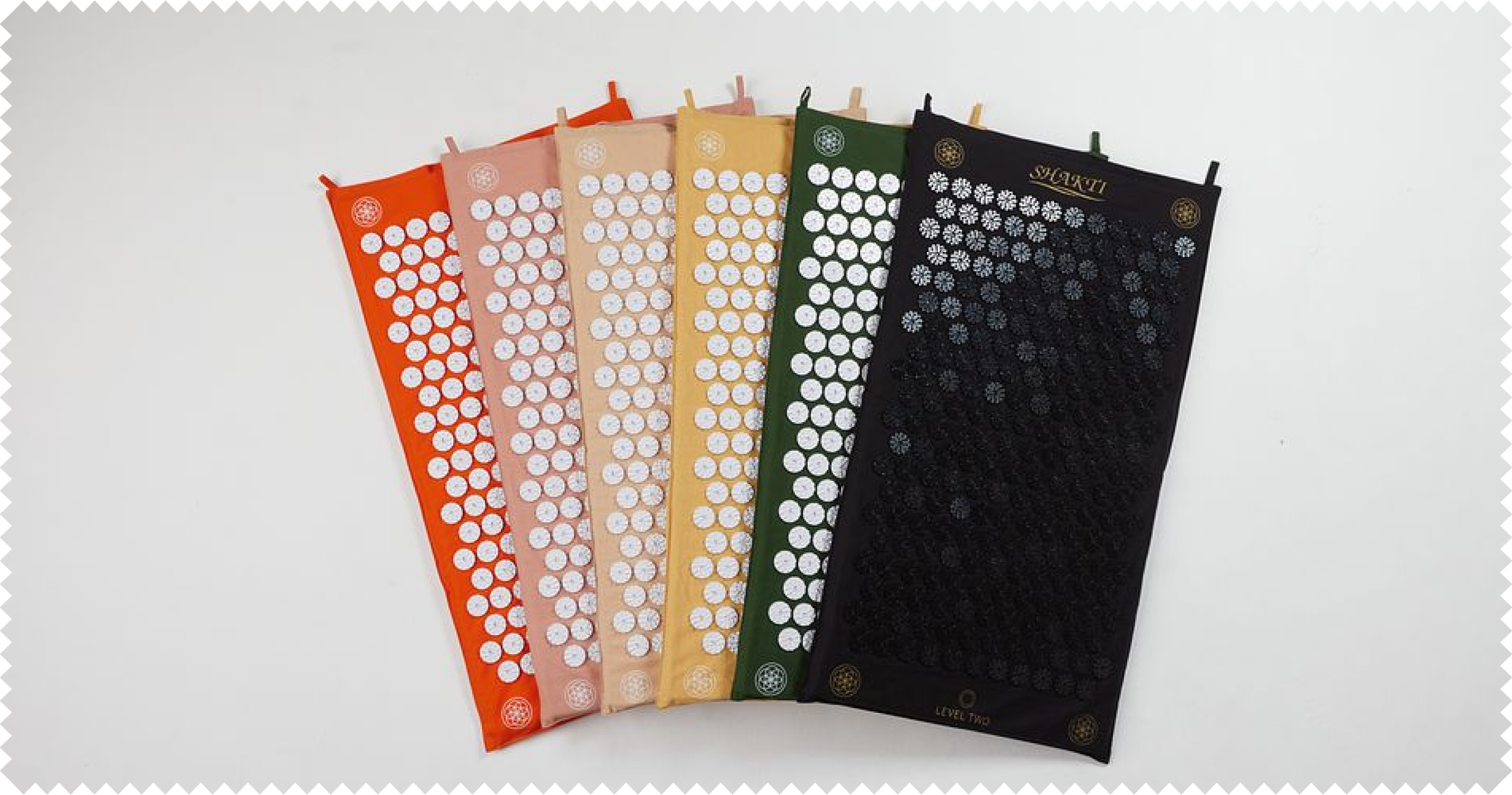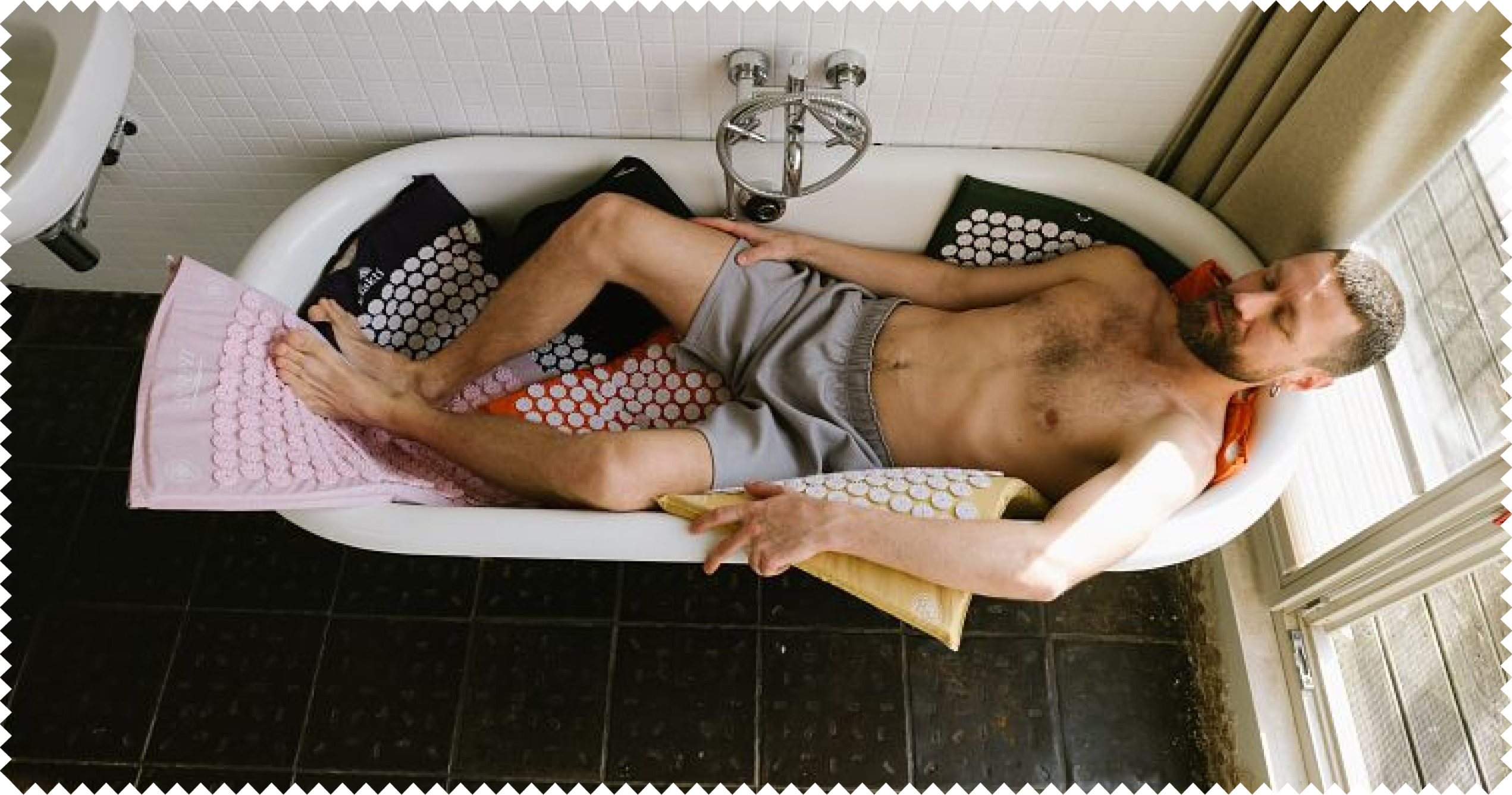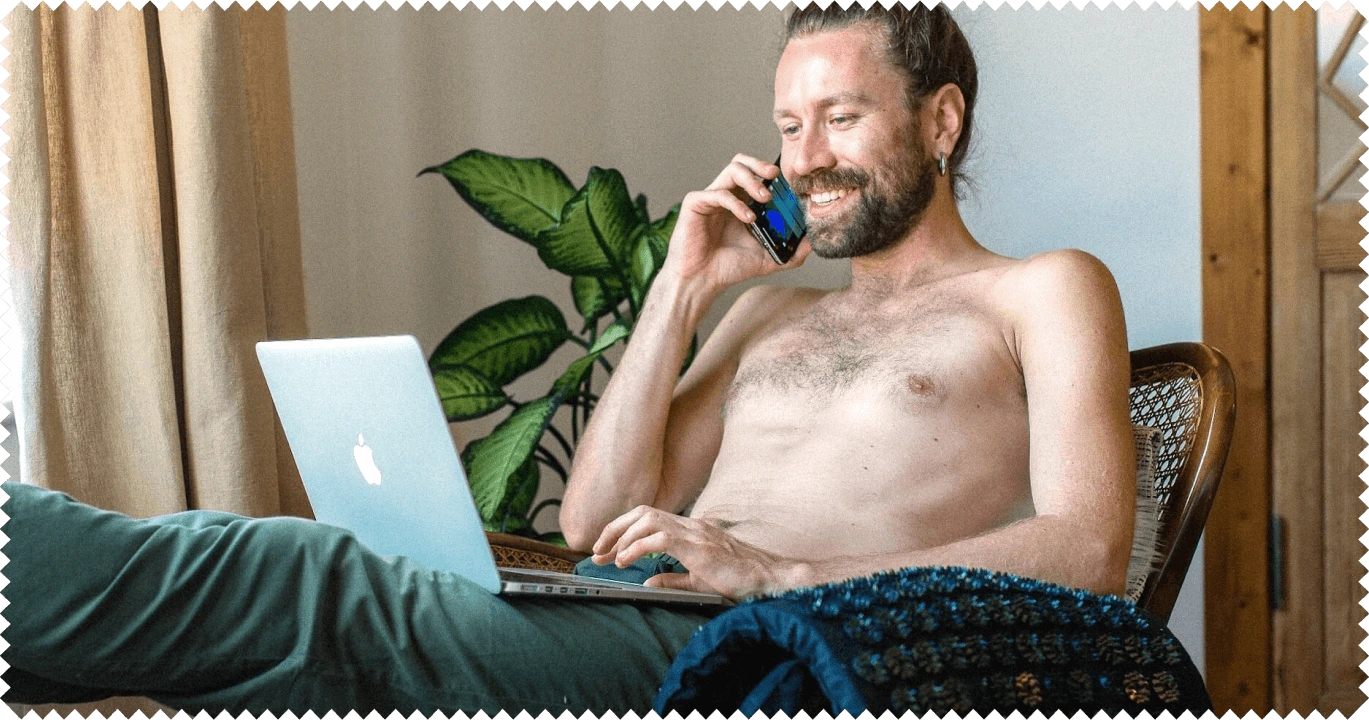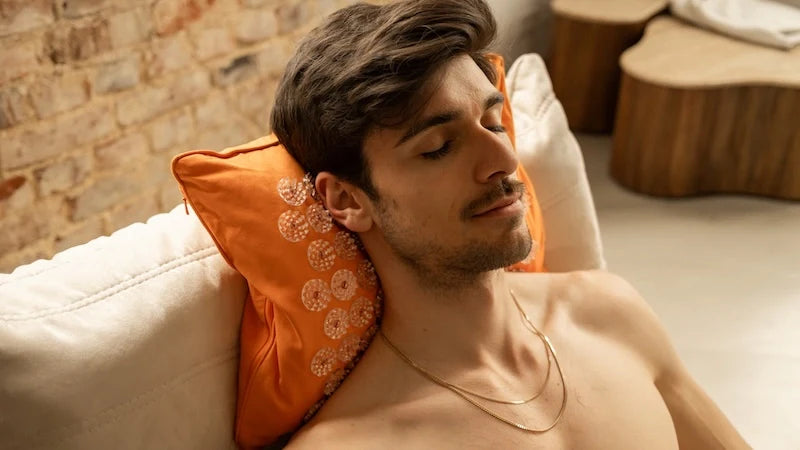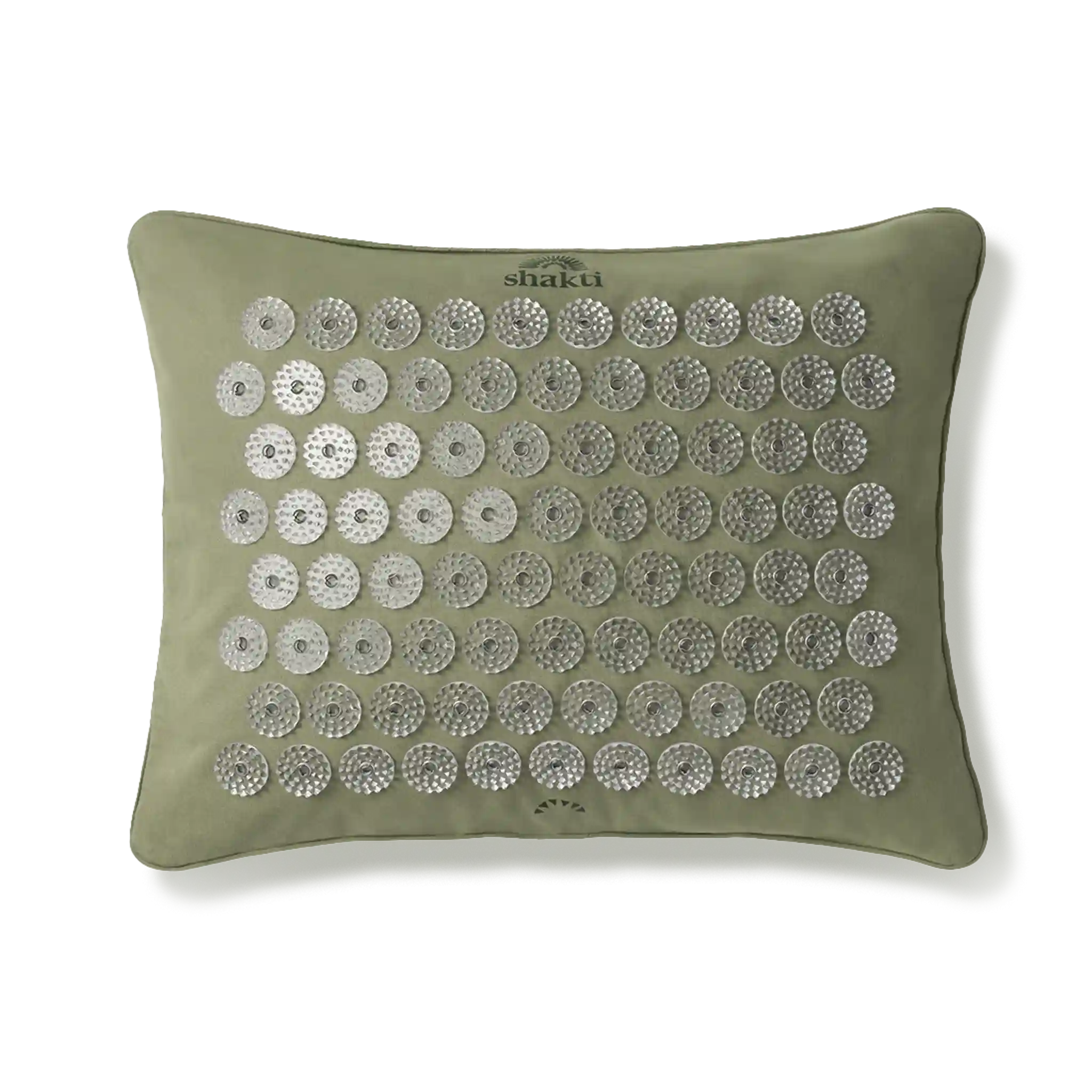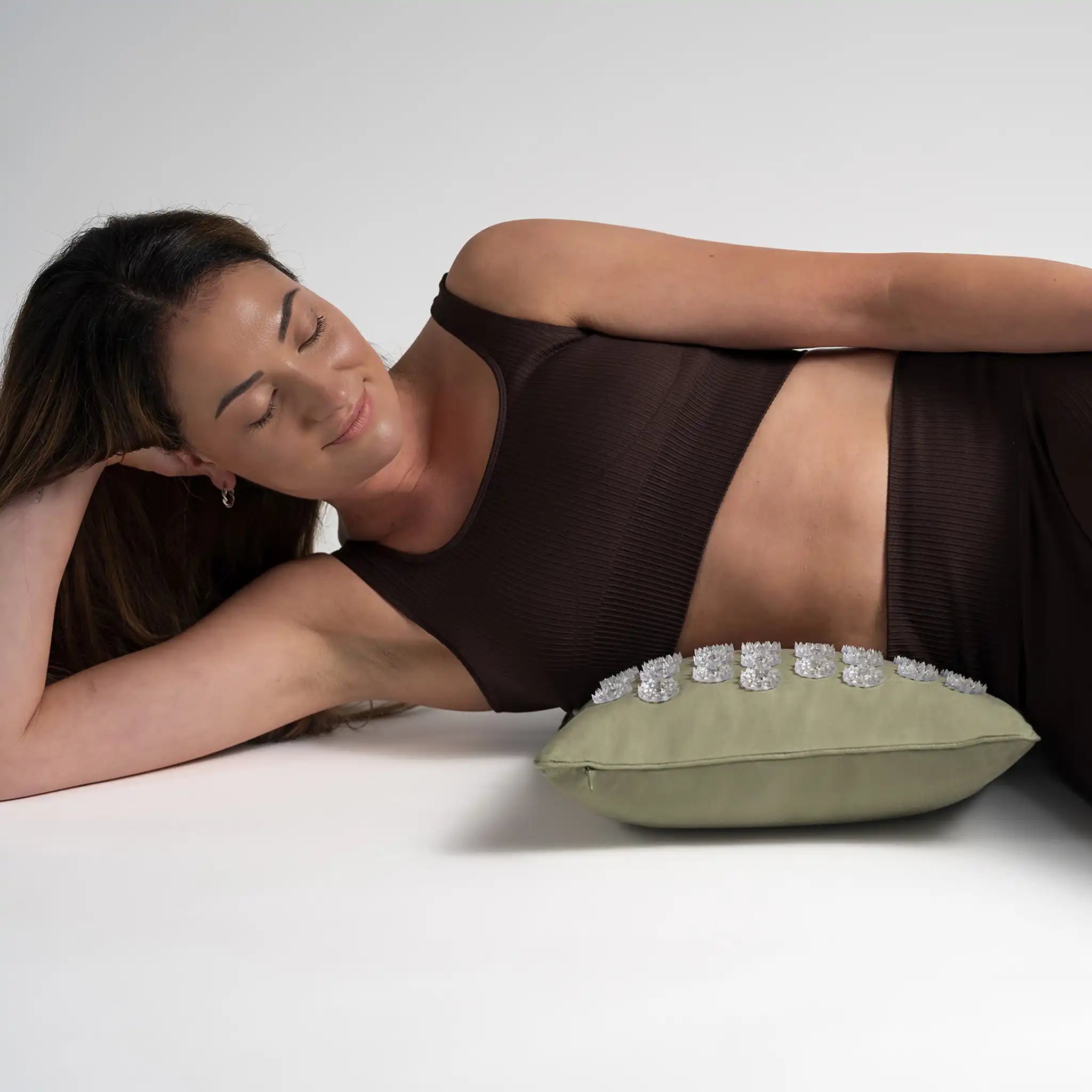Pulling a sweater over your head in the morning or buttoning up a blouse is a normal, everyday movement for most people. For others, however, it can become a major challenge. Sharp or pulling pains from the neck to the shoulder lead to considerable restrictions and are often not easy to classify. Perhaps it was just an awkward movement the day before or you were lying down the wrong way at night? Sometimes, however, the underlying cause is shoulder-arm syndrome, also known in medicine as cervicobrachialgia. To help you classify your shoulder-arm pain correctly and, above all, relieve it quickly, this article provides you with all the important information on the symptoms, causes and treatment options for this diffuse pain.
Content
1 What is cervicobrachialgia or shoulder-arm syndrome?
2 How does shoulder-arm syndrome manifest itself?
3. cervicobrachialgia - causes: Where does the pain come from?
4 Conservative treatment: What to do with shoulder-arm syndrome?
5. acupressure as a holistic approach to muscle tension
6. shoulder-arm syndrome: exercises for everyday life
7. sport & shoulder-arm syndrome: it's all about the right types of sport
8 How long does shoulder-arm syndrome last?
9 Our conclusion on shoulder-arm syndrome
What is cervicobrachialgia or shoulder-arm syndrome?
Shoulder-arm syndrome is not an independent clinical picture, but a collective term for various complaints in the shoulder, arm and sometimes neck area. The pain usually occurs on one side. You therefore have either left or right cervicobrachialgia. However, the pain often radiates from the shoulder area to the upper arm or forearm.
What happens in your body with cervicobrachialgia
The shoulder joint is a very mobile but also sensitive area. It connects the upper arm bone to the collarbone and lies directly under the acromion. The many muscles, tendons and nerves in this area can quickly lead to tension or irritation. This is exactly where the unpleasant feeling that we call shoulder-arm syndrome arises.
To help you better understand what triggers the symptoms, it is worth taking a brief look at the structures involved. The following interplay is typical of cervicobrachialgia:
- Tense muscles in the neck or shoulder area can exert pressure on the nerves running through them.
- Nerves that run from the cervical spine into the arm react sensitively to these stimuli - they transmit the pain to the forearm or even to the fingers.
- Movements of the arm or shoulder increase the pain because they put additional strain on the affected areas.
- Inflammatory processes or small swellings can additionally increase the pressure on muscles, tendons and nerves.
This means that even if you feel the pain in your arm or shoulder, the actual trigger is often a little higher up in the cervical spine or the adjacent muscle groups. This sometimes makes it difficult to classify the pain correctly.
How does shoulder-arm syndrome manifest itself?
The symptoms of shoulder-arm syndrome can be very different and vary in type and intensity. You may only feel an occasional pull when you lift your arm or, in the worst case, you may have continuous pain that radiates to your fingers. What is typical is that the symptoms cannot always be clearly differentiated. They can wander, intensify or be associated with certain movements.
Shoulder-arm syndrome: symptoms are noticeable in different places
- Shoulder pain that often radiates into the upper arm. Many people feel the pain particularly when they raise their arm above their head or turn it to the side.
- Neck pain or a stiff neck, in which the muscles around the cervical spine harden and every movement becomes uncomfortable.
- Headaches, which sometimes occur in addition - with accompanying dizziness or slightly blurred vision.
- Arm pain that spreads along the entire arm and becomes more intense with certain movements.
- Tingling or numbness in the hand, especially in the fingers, which indicates that nerves are also irritated or pinched.
Of course, these symptoms are not always associated with cervicobrachialgia. The following important rule therefore applies: if they occur permanently, are accompanied by other symptoms or worsen, a medical examination must always be carried out.
Typical trigger points: Recognizing shoulder-arm syndrome correctly
Trigger points are small, hypersensitive areas in the muscles that react particularly sensitively to pressure. Pain can radiate from here to other parts of the body, sometimes far away from the actual point.
There are several of these typical pain points, especially in the shoulder and neck area. You will often find them:
- in the upper area of the trapezius muscle, i.e. between the neck and shoulder,
- in the lateral neck muscles, where tension quickly moves into the arm,
- below the shoulder blade, where deeper muscle strands react to strain,
- or in the area of the deltoid muscle, i.e. where the upper arm attaches.
If you apply light pressure to these points and the pain is clearly noticeable or even radiates into your arm or hand, there are many indications of an active trigger point. This does not mean that something is "broken" with your muscles - it just means that your body is showing you where it needs support.
Cervicobrachialgia - Causes: Where does the pain come from?
The causes of shoulder-arm syndrome are as varied as the circumstances in which they occur. It is often not a single trigger, but a combination of physical strain, muscular tension and unfavorable posture habits. Your body reacts with pain when the balance between activity and regeneration gets out of kilter - often gradually and over a long period of time.
Typical causes include
- Tense muscles, especially in the neck and shoulder area. Triggered by prolonged sitting, one-sided strain, stress or lack of exercise.
- Constricted or irritated nerves caused by an unfavorable posture, muscular imbalances or age-related changes to the spine.
- Problems in the joints, e.g. due to age-related wear and tear, inflammation or overloading in the shoulder, elbow or cervical spine.
- Irritation of the tendons, especially the rotator cuff, which causes pain during many everyday movements.
- Injuries or overloading, for example through sport, heavy lifting or repetitive movements at work.
- Poor posture in everyday life, for example due to a permanently tilted head position at the desk or when looking at a cell phone.
These factors can occur individually or together - and they lead to certain structures in the body being overstressed, while others are barely activated.
Accompanying clinical pictures: What can also influence neck-shoulder-arm syndrome
Sometimes upper arm and shoulder pain is caused by an underlying condition that affects or even exacerbates the symptoms. Impingement syndrome, a painful constriction in the shoulder in which tendons or bursae become trapped between the acromion and the humerus, is particularly common.
Frozen shoulder syndrome can also be associated with shoulder-arm syndrome. The restricted movement is caused by inflammatory processes and impaired blood circulation in the joint. In some people, calcium deposits can also be detected in the tendons. The so-called calcific shoulder is caused by small deposits in the rotator cuff, which often trigger very severe pain. Another possible cause of pain is shoulder arthrosis, i.e. wear and tear of the joint cartilage. Last but not least, muscular-fascial tensions around the cervical spine also play a central role: a permanently high basic tension, localized hardening or a muscular imbalance irritate the sensitive nerves and trigger pain.
Conservative treatment: What to do with shoulder-arm syndrome?
As shoulder-arm syndrome is not a clearly defined disease, there is no standard treatment that is equally suitable for all sufferers. As a first step, the cause of the symptoms should be narrowed down as precisely as possible in order to target the cause. For those affected, it is primarily important that their acute pain is alleviated. In the long term, however, the aim should always be to identify the triggers and treat them.
Conservative treatment primarily involves physiotherapy exercises that loosen your muscles, promote mobility and correct poor posture. The physiotherapist works specifically on the structures that are causing your symptoms. They usually use a mixture of manual techniques, stretching exercises and targeted strengthening of the muscles to achieve long-term stability.
Painkillers can also be used in the short term - however, they should never be the sole solution, but always part of a holistic approach.
Acupressure as a holistic approach to muscle tension
Muscle tension is considered to be a frequent trigger or at least an aggravating factor in cervicobrachialgia. This is precisely where acupressure comes in as a gentle method that has its origins in traditional Chinese medicine. By applying targeted pressure to certain points on the body, tension is released. Blood circulation is stimulated and the nervous system is calmed.
In contrast to traditional massage, acupressure not only works locally, but can also influence deeper structures. In the neck and shoulder area in particular, there are many so-called acupressure points that are connected to the arm, back and even the autonomic nervous system.
You can target these acupressure points (shoulder-arm syndrome):
- GB 21 (shoulder well): Located halfway between the cervical spine and the top of the shoulder, particularly effective for shoulder and neck tension.
- LI 15 (shoulder joint point): Directly above the front part of the shoulder joint, helpful for restricted movement.
- SI 11 (celestial point of the shoulder): On the shoulder blade, approximately halfway between the spine and shoulder joint - often very sensitive to pressure.
- LI 4 (He Gu): Between the thumb and index finger - a distant point that can release tension in the shoulder area via reflex pathways.
- BL 10: At the upper base of the neck to the left and right of the spine, relieves neck pressure and pain radiating into the shoulder.
You can regularly stimulate these points manually - with your hand, an acupressure cushion or anacupressure mat - to stimulate the flow of energy again.
How the Shakti acupressure cushion can be used for shoulder pain
The Shakti acupressure pillow is ergonomically shaped and equipped with hundreds of fine acupressure points that exert targeted pressure on tense muscle areas. For acupressure or trigger point therapy, lie down on a soft mat while the Pillow supports your upper back or neck. Make sure that your shoulders are fully supported so that the acupressure points can exert even pressure on the tense muscles.
At the beginning, a short application of 10 to 15 minutes is sufficient. Many people initially experience a tingling sensation or a feeling of warmth, which is a sign that the blood circulation is being stimulated. You can gradually increase the duration as you get used to it. Also try lying on your side on the Pillow by placing it under your armpit or resting your shoulder on it.
Other gentle methods to support the treatment of shoulder-arm syndrome
In addition to physiotherapy and acupressure, you can also support your body in a gentle way to relieve pain. Cervicobrachialgia in particular is all about relieving tension from the system - not only physically, but also mentally. These gentle impulses will help you to do this:
- Heat, for example in the form of a hot water bottle or a cherry stone cushion, has a relaxing effect on tense muscles and promotes blood circulation in the affected area.
- Stretching exercises and gentle mobilization bring movement to stuck structures and help to compensate for muscular imbalances.
- Mindfulness, meditation or conscious sitting help you to recognize tensions early on and regulate stress reactions - because mental tension is a frequent amplifier of physical complaints.
Regularity is crucial here. Consciously allow yourself small breaks in your everyday life and pay attention to the signals your body sends you.
Shoulder-arm syndrome: exercises for everyday life
Targeted movement helps you to relieve your shoulders, promote blood circulation and gently release tension. You can easily integrate these two cervicobrachialgia exercises into your daily routine.
1. relaxation with the Shakti Pillow
- Lie comfortably on your back - ideally on a mat or a soft surface.
- Place the Shakti acupressure cushion under your upper back so that it reaches the area between your shoulder blades.
- Let your arms lie relaxed at your sides, close your eyes and breathe in and out calmly.
- Stay in this position for 5 to 10 minutes and feel how your shoulder area gradually relaxes.
2. shoulder circles while standing
- Stand upright with your feet hip-width apart and your arms hanging loosely beside your body.
- Now start to slowly circle your shoulders backwards - first with small movements, then with larger ones.
- Continue to breathe calmly and evenly.
- Repeat the movement about ten times and then change direction.
Sport & shoulder-arm syndrome: it's all about the right types of sport
Exercise can strengthen your muscles, improve blood circulation and correct muscular imbalances. However, every movement should be controlled and not put additional strain on the shoulder area. Sports such as swimming, yoga, walking or special back courses that focus on correct posture are ideal. Generally avoid jerky movements or repeated overhead movements - especially in the acute phase.
How long does shoulder-arm syndrome last?
How long it takes for the pain to subside depends very much on the cause and what you do about it. However, you will need a little patience: most people feel an improvement after a few weeks if they do regular exercises. However, sometimes the pain persists over a longer period of time - especially if the cause is not recognized or nothing is done about it. In such cases, chronic cervicobrachialgia can develop. The pain persists, becomes more intense or spreads over time - and significantly restricts your everyday life and quality of life. So the sooner you do something about your pain, the better your chances of being pain-free again soon.
Our conclusion on shoulder-arm syndrome
Shoulder and arm pain can be persistent and limit you in many areas of your life. The good news is that you can do a lot yourself to get your pain under control quickly.
Warmth, movement, targeted exercises and gentle methods such as acupressure help you to bring more relaxation back to the shoulder area. Even small changes in everyday life, such as consciously changing your posture, often make a difference. If you notice that certain exercises are good for you or that the tension is slowly easing, you are on the right track.
Shakti Mat will be happy to accompany you on your way to freedom from pain in everyday life.


